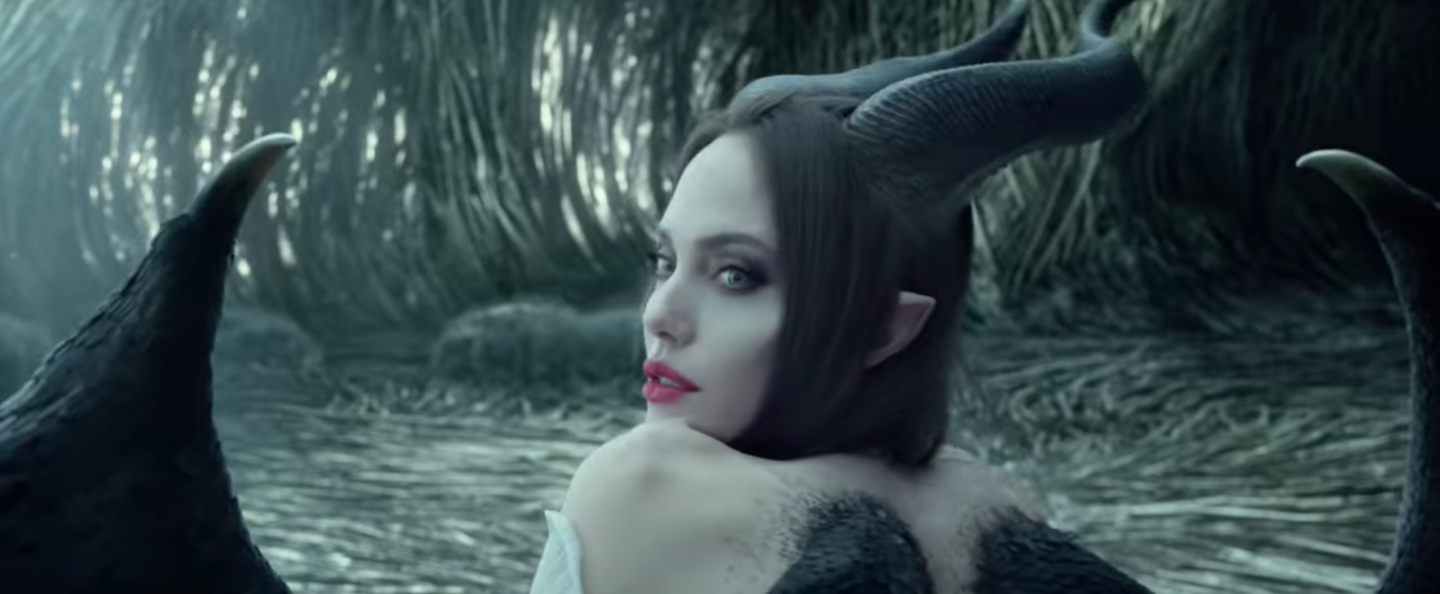For a woman who has long been painted as one of the most iconic evil villains of Disney’s repackaged and sanitized fairy tales, Maleficent (Angelina Jolie) is decidedly even softer in her sequel narrative, Maleficent: Mistress of Evil. While, sure, she has the satanic horns and black wings to lend her an “edgy” image that might briefly lead one to believe she’s capable of the same malice that prompted her to curse Princess Aurora (Elle Fanning) when she was a baby, it doesn’t long to see that she’s just a teddy bear inside. And of course, in the first film, we’re given insight into why that curse even happens–for there must be a defining moment in every woman’s life that turns her “evil,” right? And that moment is usually being spurned by a man, in this case, King Stefan (Sharlto Copley), who betrays her love for the sake of claiming the weakened throne of Ulstead, which borders the moors that Maleficent protects.
By the end of Robert Stomberg’s (better known for his special effects than directing resume) movie, Maleficent is repainted as a misunderstood fairy who really ought to be named Beneficent. Despite a different director (Joachim Rønning) and an additional two writers (Noah Harpster and Micah Fitzerman-Blue, joining Linda Woolverton) for the sequel, this remains evident in the second installment of her story, forever intertwined with Aurora’s a.k.a. Sleeping Beauty’s. This time around, Aurora’s romance with Prince Phillip (Harris Dickinson) has escalated to the point of him asking her to marry him, much to Maleficent’s concern and dismay upon being informed by her raven/human stooge, Diaval (Sam Riley). She discourages the so-called “union” but can’t help but be cajoled by Aurora’s sweet imploration for her to accept the invitation of Queen Ingrith (Michelle Pfeiffer) and King John (Robert Lindsay) to join them for dinner to celebrate. Naturally, one of them has certain machinations about framing Maleficent for something diabolical while she’s at their table. Her nefarious reputation just makes it too easy to place blame on her for whatever one wants.
With Maleficent’s temper roused and an accusation of another curse placed, Aurora seems all too quickly to take sides with her human camp, abandoning Maleficent when the road gets tough and slanderous. Hurt by yet another betrayal from a human she thought never would (then again, Stefan was her father), Maleficent flies away, only to be shot down with an iron arrow (for everyone knows iron is Maleficent’s Achilles’ heel). And just when you think the almighty mistress of “evil” is done for, she’s rescued by one of her own rare dark fairy kinds: Conall (Chiwetel Ejiofor). Awakening in a labyrinthine nest with her hair for once let out of that cloche-like horn hat, we are again made privy to Maleficent’s soft side. In fact, it’s difficult to conjure in one’s mind as many scenes of her being wicked as it is of the humans in her life, hence one of her other species members, Borra (Ed Skrein), remarking to her in his attempt to get her to go to war, “Humans are nothing more than locusts that swarm the earth.” The dark fairy–or Dark Fey–has a point. For who knows better than he and his fellow band of, for all intents and purposes, placeless refugees (an underlying theme of the movie that’s all too dear to Jolie), forced into hiding by bloodthirsty humans for centuries? And, in many respects, the allusions to humans pillaging the precious and rare magic of the moors seems to put none too fine a point on how callously humanity has destroyed valuable resources that never really belonged to them. In Queen Ingrith’s mind, of course, the moors are a wellspring for “her kind” to draw from, and she won’t have it overrun by a pile of fairy freaks. In this sense, too, one gets the idea that Maleficent’s screenwriters are attempting a metaphor for how our current government still treats the “other” in this epoch. To be sure, Queen Ingrith is not without her Trumpian qualities as she informs Aurora, “You know what makes a great leader? Instilling fear in people and then getting them to fight for your cause.” Nor is she without her Trumpian determination to wreak havoc for the sake of her cockamamie non-principles.
In this way, Maleficent is made to look once again rather compassionate and altruistic when set against the contrast of any human, especially one who has gone mad with the thrill and greed of power. Conversely, Maleficent has ruled the moors with a gentle hand, even surrendering any official authority she might have had to Aurora at the end of the first movie. A far cry from the crude and two-dimensional rendering of her that first appeared in Giambattista Basile’s original fairy tale (subsequently adapted by Charles Perrault and the Brothers Grimm), Maleficent’s lack of detailed lore in the original fairy tales have paved the way for her to be reinvented in the twenty-first century with more complexity. Alas, it would appear that her reimagining has been something of a missed opportunity as all the glory ultimately goes to Michelle Pfeiffer as Queen Ingrith. For, in truth, there is no more interesting or engaging character (at least for the purposes of being riveted) than one who is evil. Something Maleficent simply can’t deliver on in her new era of “humanization.” Interestingly, some version of Ingrith appears in Perrault’s fairy tale, for the prince’s mother turns out to be an ogress with killing designs on his wife. As for Maleficent, well, her legend has been tainted. She no longer has street cred (in fact, Miranda Priestly seems scarier). The woman loves children, for fuck’s sake. What kind of evil force to be reckoned with is this? The post-’05 Angelina Jolie kind, one supposes.






















